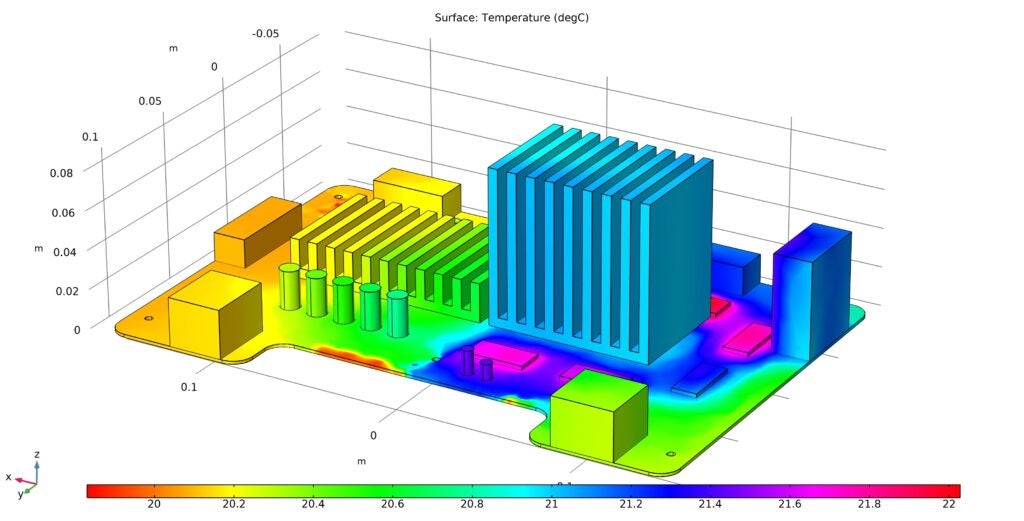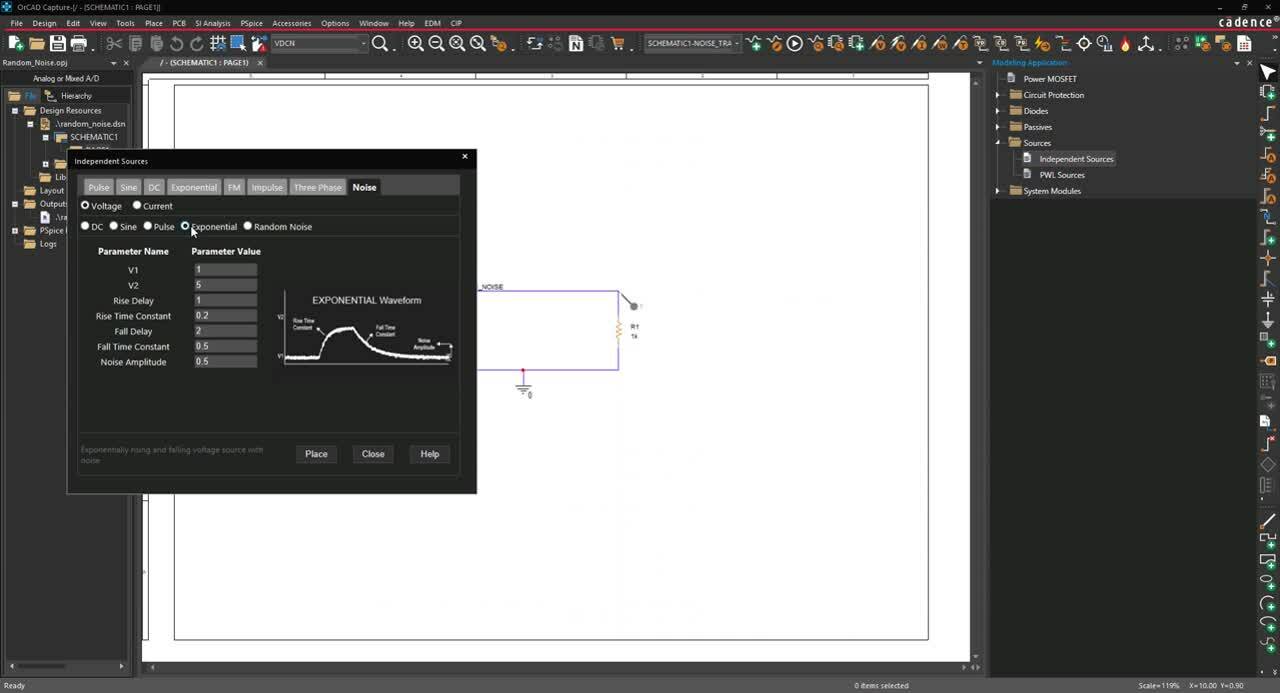
Modeling designs helps engineers verify whether their circuit will function as intended. Modeling programs simulate circuit behavior under different conditions and in accordance with the design requirements, allowing engineers to better plan and build circuits.
Every SPICE simulation needs to have a source or input signal. To analyze how the circuit will behave in real life, this input must be modeled accurately. If not modeled accurately, functionality issues can go undetected until far later in the design process, wasting time and money. To efficiently and accurately create a noise source SPICE model, the intended input signal must be interpreted by identifying the type and signal values for replication.
What is a Noise Source?
A noise source incorporates random noise into several standard sources for simulation. When a circuit is used in the real world, the environment is seldom ideal. Incorporating noise helps to analyze how the circuit will perform with realistic inputs.
What is Needed to Model a Noise Source?
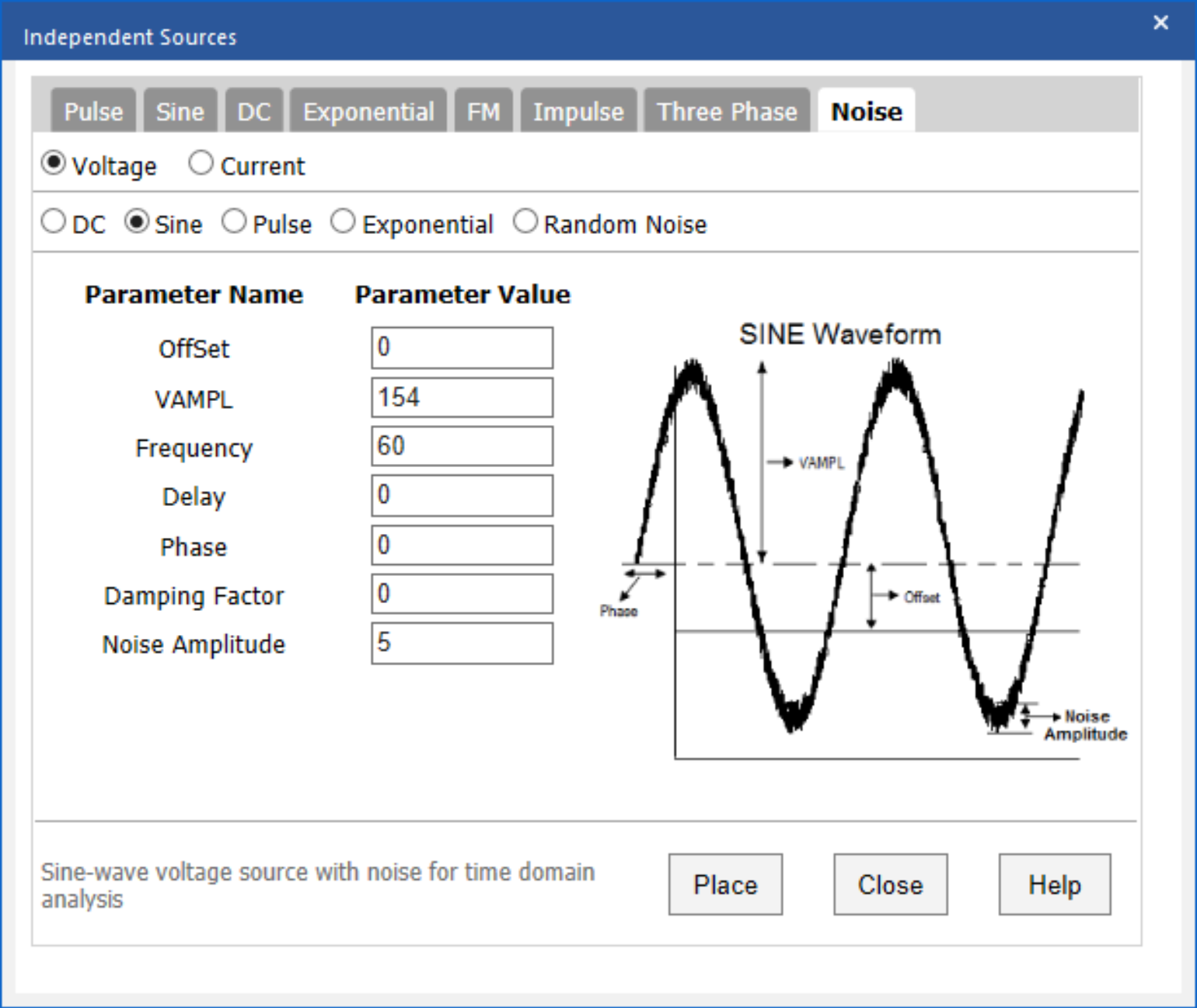
To create the required noise source for simulation, there are four items that must be defined:
- Type
- Which type of signal will be the input for the circuit: voltage or current?
- Waveform
- What type of waveform is required: DC, Sine, Pulse, Exponential, or Random Noise?
- Data Points
- What are the critical signal values to create the desired waveform?
- Noise Amplitude
- How much noise should be introduced to the circuit?
This information must be incorporated into the SPICE simulation model which can be achieved by manually creating or editing a text file. Keep in mind if the source signal created is not the intended outcome, values will need to be edited manually. This manual process to produce the desired source signal is time consuming and increases the likelihood of errors; however, the PSpice Modeling App provides a fast, easily configurable, and fully integrated method to create a noise source SPICE Model for simulation.
Creating a Noise Source SPICE Model with PSpice
The noise source modeling application quickly creates various noise source models by adding random noise to the desired waveform with a wizard-based approach. The necessary source specifications are pre-defined and users can easily input desired parameters required for all noise sources such as:
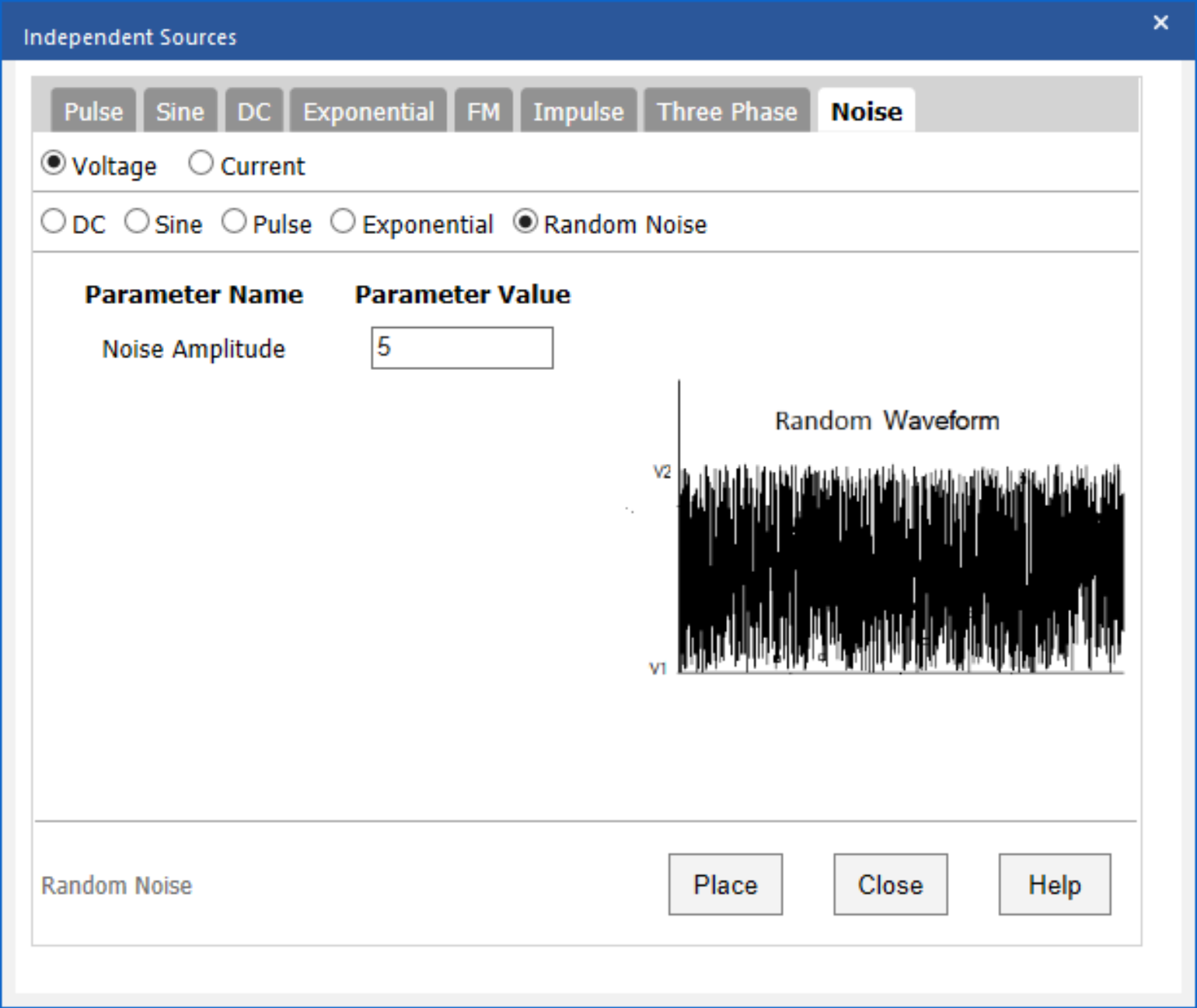
- Type:
Select either a Voltage or Current.
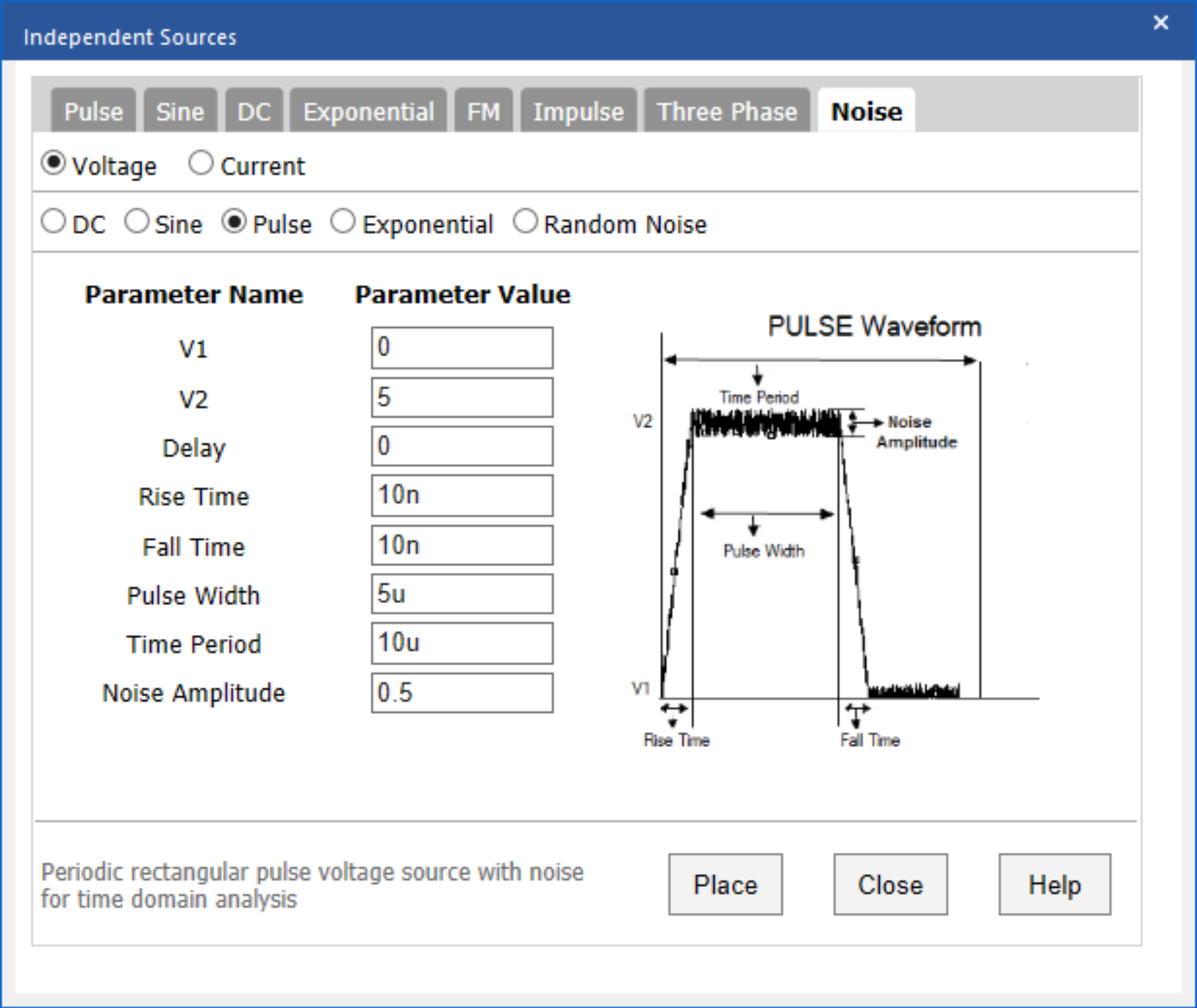
- Waveform:
Easily select a DC, Sine, Pulse, or Exponential waveform as the base signal in which random noise will be incorporated into. A random noise source can also be selected which is an independent random transient noise source.
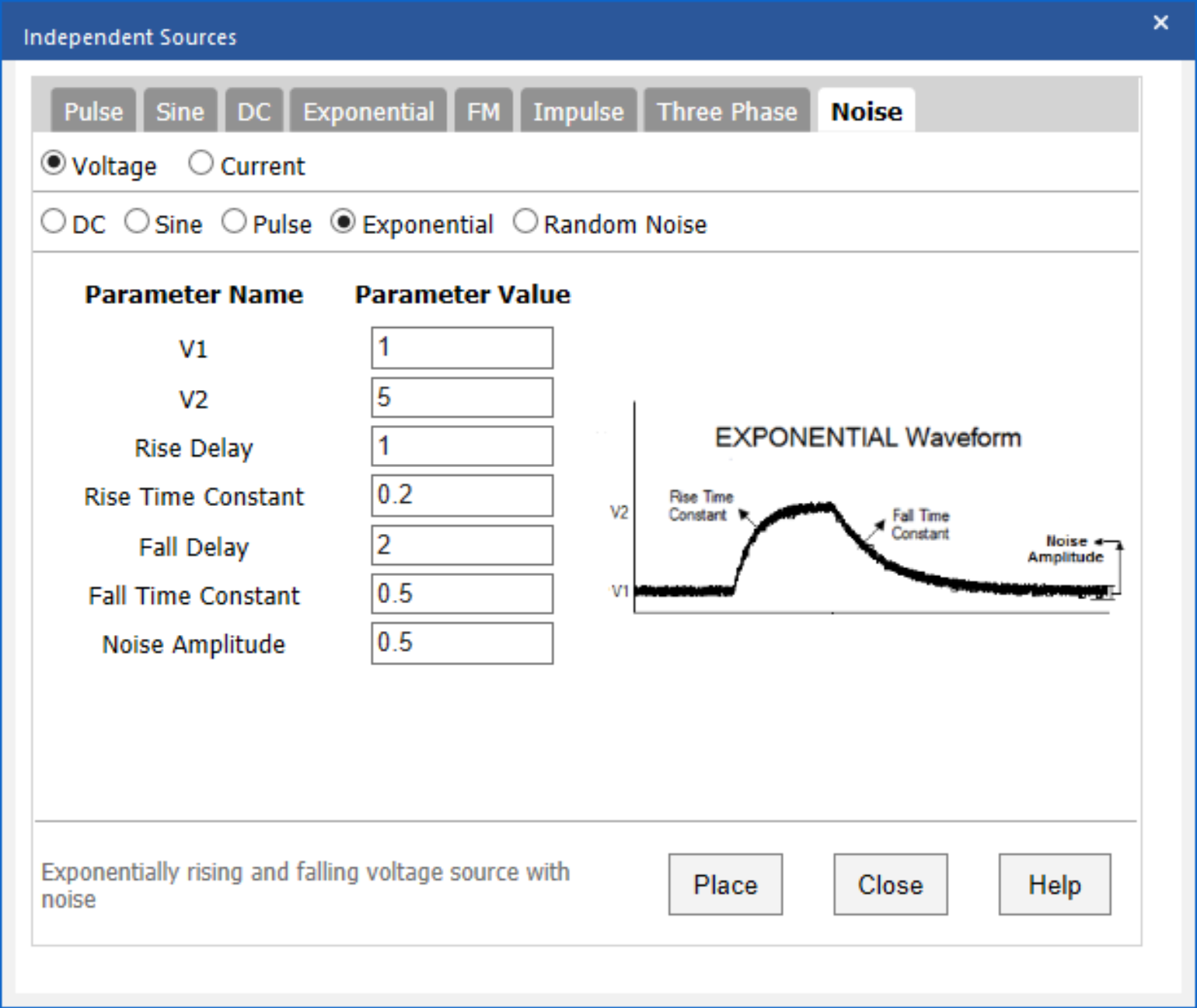
Based on the waveform type selected, the PSpice Modeling Application automatically defines the required parameters which differ for each signal. For information on how to configure each type of source, view the corresponding blogs for DC, Sine, Pulse, and Exponential SPICE models.
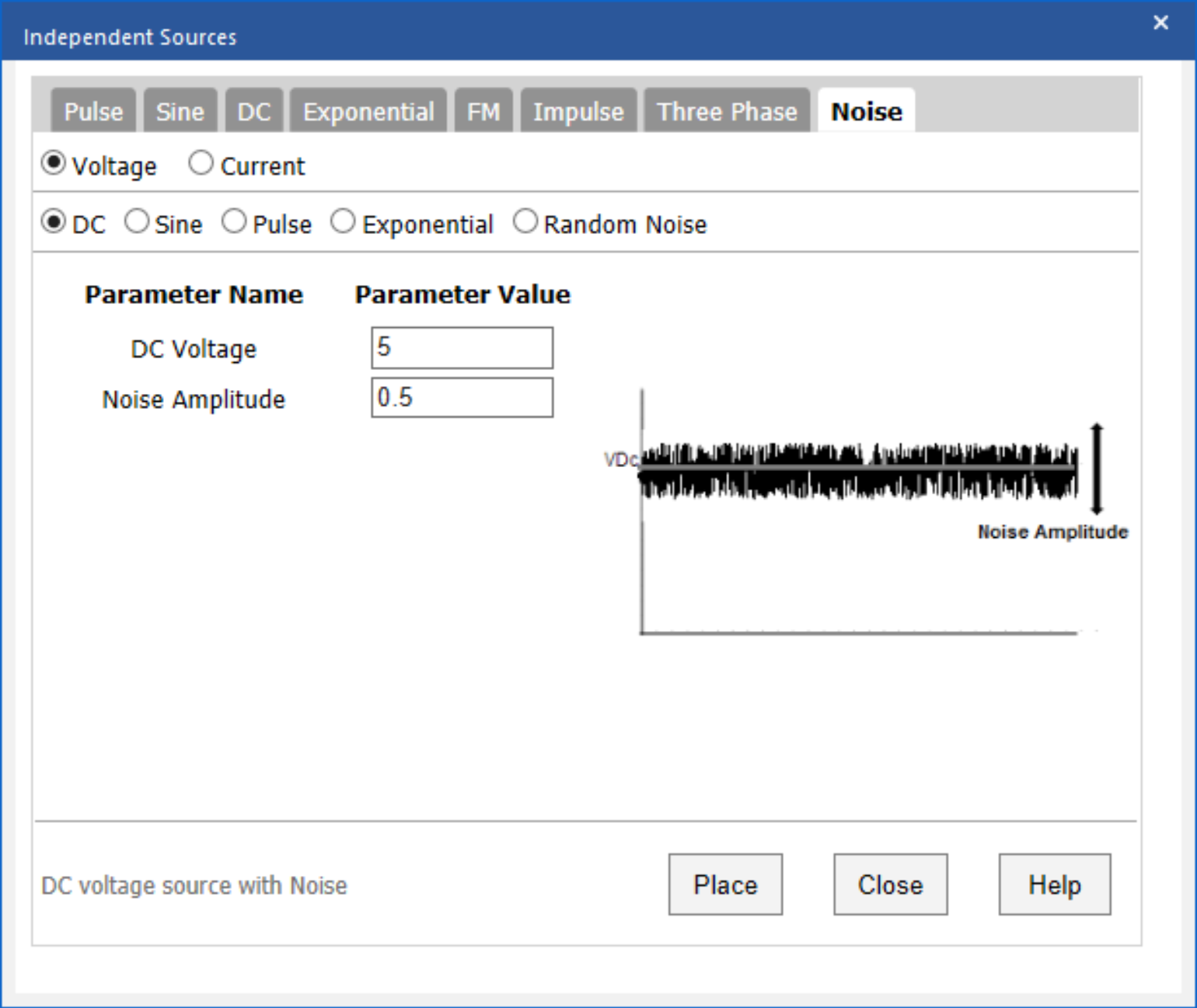
- Noise Amplitude:
Noise Amplitude can be defined as the difference between the maximum voltage limit and minimum voltage limit. For example, if the voltage magnitude is 5V and Noise Amplitude is 1V, the output of the noise source will fluctuate between 5.5V and 4.5V.
Using the inputted information above, the PSpice Modeling App generates a schematic symbol and automatically associates the newly created noise source SPICE model without leaving the OrCAD Capture environment. The PSpice Modeling App also automatically manages the simulation profile configuration, eliminating any library set up for simulation. To try this yourself, be sure to download the Free Trial of OrCAD.
Check back for more SPICE model how-tos in this series and get step-by-step instructions for creating a Noise source SPICE model at EMA Academy.










